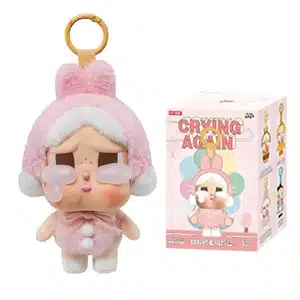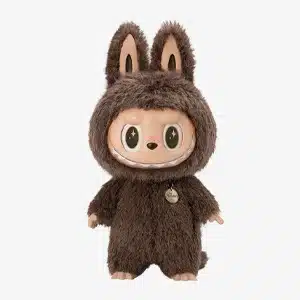KOBE BRYANT
-
Nike Kobe 5 Protro Year of the Mamba University Red
AU $495.00+or 4 installments 123.75
with Afterpay
Kobe Bryant, a legendary figure in the world of basketball, is widely respected and loved by fans around the globe. His unparalleled skill on the court, led by his drive, precision, and relentless work ethic, has left a lasting mark on the sport. Beyond his athletic skills, Kobe’s legacy extends far beyond basketball. He was a beacon of inspiration and resilience, demonstrating leadership, determination, and a commitment to excellence in everything he pursued. His contributions to the game and his generous efforts continue to inspire and impact countless lives, ensuring that his legacy will endure for generations to come.
Kobe Bean Bryant’s journey from a young basketball enthusiast to a global basketball icon is a testament to his unparalleled talent and unwavering dedication to the game. Born on August 23, 1978, in Philadelphia, Pennsylvania, Bryant’s early exposure to basketball came through his father Joe, a former NBA player who moved the family to Italy when Kobe was just 6 years old to continue his basketball career. In Italy, Kobe immersed himself in both basketball and soccer, developing a deep love for the Los Angeles Lakers and the A.C. Milan soccer team. This multicultural experience shaped his unique style and global perspective on sports. At the age of 13, Bryant’s family returned to Philadelphia, where he continued to improve his skills on the basketball court.
Attending Lower Merion High School, Bryant quickly made his mark on the basketball scene. Starting on the varsity team as a freshman, he showcased his talent and work ethic, earning awards such as Philadelphia Player of the Year and All-American honours. By his senior year, Bryant had become a national sensation, leading Lower Merion to a state championship and setting records as South-eastern Pennsylvania’s all-time leading scorer.
Despite numerous college scholarship offers, Bryant made the bold decision to skip college and enter the 1996 NBA Draft. This move marked the beginning of a career that would see him become one of the greatest players in basketball history. The Charlotte Hornets drafted Kobe Bryant as the 13th overall pick, but he was swiftly traded to the Los Angeles Lakers in exchange for Vlade Divac. This trade was arranged by then-General Manager Jerry West, who was impressed by Bryant’s exceptional skills during a workout session where he outperformed former NBA players Michael Cooper and Larry Drew. The trade of Bryant also expedited salary cap flexibility for the Lakers, enabling them to sign Shaquille O’Neal. Despite limited playing time early in his career, Bryant made history by becoming the youngest player to enter an NBA game, making his debut with 6 minutes of playtime against the Minnesota Timberwolves. He earned his first NBA point, a free throw, in the subsequent game against the New York Knicks. In his second season with the Lakers, Kobe demonstrated his talent and earned a spot in the NBA All-Star Game, becoming the youngest player ever to achieve this honour.
During the 2005–06 and 2006–07 seasons, Bryant led the NBA in scoring, showcasing his offensive expertise. In 2008, he earned his first league MVP award, a testament to his exceptional skills and contributions to the game. Adding to his awards, Bryant secured his fourth NBA championship in 2009, earning the finals MVP title with an impressive average of 32.4 points per game in the series. The following season, he guided the Lakers to their third consecutive Western Conference championship and claimed another NBA finals MVP after a thrilling seven-game series victory against the Boston Celtics.
Despite subsequent division titles, the Lakers faced postseason eliminations in the second round for several seasons. The 2012–13 season brought notable additions to the team with Steve Nash and Dwight Howard, raising championship expectations. However, Bryant’s season-ending Achilles tendon injury in April 2013 affected the team’s momentum. His return in December 2013 was met with anticipation, but a knee injury limited his play to just six games that season. Despite setbacks, Bryant returned for the 2014–15 season, only to be sidelined again by a rotator cuff tear in January 2015. Despite challenges and a career-low shooting percentage, Bryant remained a force on the court until his retirement after the 2015–16 season.
Kobe’s collaboration with Nike led to the creation of the Kobe shoe line, reflecting his on-court persona and commitment to excellence, embodying the Mamba Mentality philosophy. These sneakers not only boast style but also incorporate cutting-edge technology, consistently pushing boundaries in innovation. Kobe’s footwear showcases Nike’s advanced Flyknit technology, ensuring a lightweight, breathable, and snug fit that enhances agility on the court. Many Kobe models feature a low-top design, chosen by Kobe himself for its support during quick movements and directional changes. The cushioning systems in Kobe’s shoes vary, focusing on impact protection and energy return. Whether utilizing Zoom Air units, Lunarlon foam, or other technologies, the Kobe brand prioritizes comfort and responsiveness, elevating players’ performance.
Kobe was deeply involved in the design process, drawing inspiration from various sources including Beethoven, Picasso, and professional wrestling. His shoes were crafted to tell stories, incorporating references and coded messaging, such as in the Kobe 9 with its embedded secret language. Even in retirement, Kobe continued to deepen his creative input, drawing from his increased time for reading, cultural immersion, and reflection on new design elements that could enhance future releases.
The Kobe 6 ‘Grinch’ and ‘Reverse Grinch‘ have emerged as highly sought-after models among Kobe fans. Featuring vibrant colours reminiscent of a beloved childhood character, these shoes inject personality and flair onto the basketball court. The distinctive bright green colour of the Kobe 6 ‘Grinch’ also makes it highly visible during broadcasts, contributing to its popularity and driving up its resale value to well over a thousand dollars. Because of the impact that the ‘Grinch’ has made Nike released its counterpart, the ‘Reverse Grinch’, providing another extension of character to the court.
A notable moment showcasing the significance of these sneakers occurred on Christmas Day 2020, during a pivotal game where the Los Angeles Lakers triumphed over the Dallas Mavericks with a score of 138-115. Anthony Davis of the Lakers delivered an impressive performance, scoring 28 points and grabbing 8 rebounds while sporting a special pair of sneakers—the slime green Nike Kobe 6 “Grinch.” This colorway held special significance as Kobe Bryant himself had worn it exactly a decade earlier, facing off against LeBron James and the Miami Heat on Christmas Day 2010.
Following the tragic loss of Kobe in 2020, there was a notable surge in demand for his sneakers. Beyond being mere footwear, these shoes became a way for fans to carry a piece of Kobe’s legacy with them. This unprecedented demand catapulted Kobe shoes into the realm of highly sought-after collector’s items, renowned for their exceptional collectability and resale value.
The Kobe brand embodies more than just a collection of basketball sneakers; it serves as a living tribute to the legacy of a basketball legend who transcended the sport. Kobe Bryant’s profound influence, steadfast dedication, and embodiment of the Mamba Mentality are intricately woven into each release. These sneakers epitomize the fusion of performance and style, making them a desirable choice for athletes and fashion enthusiasts alike.
The Kobe brand stands as a perpetual homage to the Black Mamba himself, continuing to inspire future generations of athletes and sneaker enthusiasts to embrace the Mamba Mentality, a relentless pursuit of excellence that extends far beyond the basketball court and resonates in all aspects of life.
FAQ
How does Kobe fit?
They fit true to size, however individual size preferences may vary.
Why are Kobe sneakers special?
Kobe integrates his own personality into his shoes, making them a story in itself. The design process shows how no portion of the shoes is left without careful consideration.
Does Nike still sell Kobe’s?
Nike announced the return of the Kobe line in August 2023, three years after his passing.
What does Protro mean?
Protro is short for Performance Retro. A sneaker with a classic design but with modern technologies to support performance on the court.
What does the Kobe symbol mean?
Kobe described six shapes that come together to create an image resembling a sword sheath. He elaborated that his talent represents the sword, while his life experiences serve as the sheath, encompassing and shaping his journey.













































